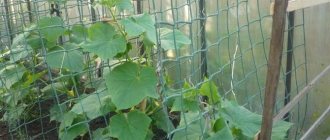Plant life cycle
After the orchid has bloomed, a dormant period begins (how many times a year and how long does the orchid bloom?). At this time, growth and metabolic processes slow down. A flower needs rest to gain strength for the next life phase. This is the reason for the need for different care at different periods of life.
Important! One of the most popular types of orchids - phalaenopsis - also needs a period of rest after flowering, but in this variety it is relative due to continuous growth throughout the year.
Read more about how to care for your orchid during and after flowering here.
Orchid care after flowering
After flowering, the orchid enters a stage of rest, hibernation. At this time, adult plants can be transplanted into a fresh substrate (once every 2-3 years), increasing the pot by 2-3 cm. Plants whose roots have strongly climbed out of the pot, or it is clearly visible that the roots are in the substrate, also require replanting. bad: they have turned black, become soft, rotted, or have a musty smell.
After flowering, the orchid can be transplanted into fresh substrate
During dormancy, the orchid is watered once a week or even less often. In this case, spraying is not carried out, although if the air humidity is less than 40%, you need to place a bowl of water or wet expanded clay near the plant.
Also, during the dormant period, the orchid is not fed or stimulated to grow or produce babies or flower stalks. The exception is sick plants or after transplantation, which need help after suffering stress.
After transplanting, you can wipe the orchid leaves with water soaked in a solution of succinic acid: 1 tablet per 1 liter of water, after two days you can water the transplanted plant with the same solution.
The orchid is created with conditions under which it should be in bright light, and the difference between day and night temperatures should be about 10 degrees, that is, +25 o C during the day and +15 o C at night. After such a rest, the orchid will definitely bloom in a few months.
In some types of orchids, the peduncle is cut off immediately after flowering, but in the most common orchid, phalaenopsis, the green peduncle can bloom again. After flowering, all types of orchids need a period of rest, with rare watering and no fertilizing.
Nuances of home care
Before the buds appear
In the spring, the orchid begins its growing season , at this time there is active growth and activation of the life processes of the flower, the plant grows leaf and root mass, throws out a peduncle, lays a flower bud, and prepares for flowering.
If before the expected flowering the orchid was sick, its roots are poorly developed or the leaves are not healthy, then you should not allow flowering, so as not to weaken the plant even more.
If there are no problems with the health of the roots and leaves, you can safely stimulate flowering, for which you need:
- reduce watering - dry soil will give the orchid an impetus for action, because in its natural environment it blooms after the rainy season;
- provide good lighting, add artificial light if necessary;
- apply fertilizer twice a month;
- maintain a high level of air humidity indoors, often spraying the plant with warm, settled water or placing a container of water nearby;
- maintain a difference in air temperature: at least +23 degrees during the day and at least +18 at night.
You need to start feeding the orchid immediately after it begins active growth and before the first bud opens. Fertilizers in liquid form, due to their ability to be absorbed evenly, are the best option for feeding orchids. Another important criterion for choosing a fertilizer is its acidity - the pH should be 5.5–6.5, since neither the acidity of the substrate nor the alkali content can be increased.
Speaking about fertilizers, it is necessary to say what components should be included in them and why:
- potassium – for the formation of buds, carbohydrate metabolism and improvement of plant immunity;
- nitrogen – activates the growth of green mass of the flower, can inhibit flowering;
- phosphorus – promotes growth and flowering, is responsible for the health of roots;
- boron and magnesium – accelerate vegetation and bud formation;
- iron – stops yellowing and dying of leaves.
We invite you to watch an informative video about basic orchid care before flowering:
After the petals drop
The dormant period begins immediately after the orchid has bloomed - it needs to rest, but caring for it should be no less thorough than during the growing season and flowering.
So, what needs to be done next, how to care for the plant after the flowers have bloomed on it:
- Reduce the amount of fertilizer by half to avoid re-blooming. It is especially important to do this in winter.
- Remove dried peduncle. It is necessary to cut it under the base, but only after it has completely dried.
- Change the substrate or completely transplant the plant into a new pot.
- During replanting, remove all dry and rotten roots, if any.
- Resume watering 2 days after transplanting.
Below is an informative video about caring for an orchid after flowering:
in winter
In winter, caring for an orchid with faded flowers differs from caring for it in the warm season:
- watering is done 2 times a month;
- There is no need to apply fertilizers in winter;
- the air temperature should be +15-20 degrees;
- additional lighting is required;
- eliminate drafts, but regularly ventilate the room;
- insulate the flower if it is on the windowsill;
- maintain high air humidity.
We invite you to watch a video about caring for an orchid in winter:
Proper watering of Phalaenopsis
The photo shows the correct watering of an orchid.
Watering an orchid largely depends on the pot in which it will grow. For the first time, Phalaenopsis can be left in the flowerpot in which it was sold in the store. However, such pots are not very beautiful, so they are not liked by many gardeners who replant their beauties in special glass or plastic orchid pots. Based on this, recommendations for watering Phalaenopsis are as follows:
- A plant in a plastic pot with large holes at the bottom is immersed in a container of water at room temperature for 15-20 minutes once every 5-7 days (pictured). Whether Phalaenopsis needs watering can be easily determined by the weight of the pot. If it's light, it's time to water. Soil saturated with water is quite heavy. After the allotted time has passed, the pots are pulled out and placed on a dry tray to drain excess water. There should be no water in the orchid tray. Otherwise, its lower roots will begin to rot.
- It is recommended to water plants in beautiful glass or ceramic pots from above. The soil will not absorb enough water through the small holes at the bottom. Watering should be done very carefully and not too often. You can make sure that the soil is dry using your finger, pushing it inside the pot, first picking out the top layer of bark. If the bark inside is still wet, it’s too early to water. In a transparent pot, the condition of the substrate can be assessed by its appearance. Dry soil is lighter than wet soil.
- The Phalaenopsis transplanted into the basket will have to be watered a little more often. In such decorative pots, the bark dries out quickly. Therefore, approximately once every 2-4 days, depending on the air temperature in the room, baskets with orchids are immersed in a container of water.
You will be interested to know: Indoor primrose: care at home, flower photo
The main rule of watering orchids is not to overwater them! It is better to overdry them than to overwater them. The fleshy roots of the plant begin to rot from excess moisture, and saving the plant later is quite difficult.
Water for irrigation must be settled and at room temperature. From time to time, it is recommended to pamper the plants with a warm shower to wash away the dust. After this procedure, all leaf axils of the flower must be blotted with a napkin, since the growth point is located in them. You can wash orchids in the shower from spring to autumn. In winter, when the plant is dormant, showering is contraindicated for them.
Is it necessary to prune and replant after flowering?
When and how to prune?
After there are no buds or buds left on the peduncle, it is necessary to prune the orchid, otherwise it will bloom again, which will weaken the plant.
You need to trim the shoot that had flowers at a distance of 1 cm from the base with previously disinfected scissors or a knife and only when it is completely dry. If “dormant” buds have formed on the stem, from which shoots may appear over time, then it is worth trimming the peduncle a little higher.
Sometimes the cut stem turns out to be hollow and water can get into the hole formed during watering. In this case, you need to either water very carefully or cover the hole with beeswax.
Attention! If the leaves turn yellow or darken, they must also be removed.
Below is a visual video of trimming the peduncle after flowering:
How to replant?
After flowering, the orchid needs to replace the substrate ; in addition, it is necessary to carefully inspect and wash the root system of the plant and remove damaged roots. That is why it is better to completely replant the plant.
Transplant instructions with video
Rapid drying of the soil after watering and roots protruding from the lower holes of the pot indicate that it is time to transplant the orchid into a larger container, that is, into a new pot. Most often, this need occurs 3-4 years after purchasing the flower.
You can choose a transparent plastic, glass, clay or ceramic pot for Phalaenopsis. Transparent ones are more convenient because through their walls you can observe the root system of the plant. There must be a hole at the bottom of any pot, and, if possible, more than one. You can also plant an orchid in a basket filled with substrate.
Soil for orchids can be purchased at a flower shop or prepared independently from the following ingredients:
- Leaf soil. The decomposing leaves will provide natural nutrition.
- Pine bark or cones. Bark should only be taken from healthy trees. It can also be purchased at a flower shop. It is recommended to disinfect and dry it before use. It will perform the main drainage role. The bark and split scales of the cones can be used for decorative purposes. Brick chips, clay shards and crushed stone can also be used as drainage.
- Sphagnum moss. With its help, moisture is retained, for which the top layer of soil is covered with moss. It is recommended to change it every 6 months.
- Charcoal. Necessary for maintaining water balance. It should not be more than 10% in the substrate.
You will be interested to know: Why Kalanchoe does not bloom and what to do at home
When the soil and pots for replanting the orchid are ready, the plant must be carefully removed from the old pot. It should be watered well first. You should not immediately plant Phalaenopsis in a new container. It is necessary to conduct an audit of its roots. Light and hard healthy roots should be left, but blackened and dried ones should be cut off.
The plant should be immersed in the new container at the same level as in the previous pot. The transplanted orchid is not watered. It can be sprayed and removed for 10-15 days in a damp, shaded place.
Mini phalaenopsis orchid after transplantation
With proper care and compliance with all recommendations, within a few months after transplantation, Phalaenopsis will produce a new peduncle.
VIDEO: HOW TO TRANSPLANT AN ORCHID INTO A POT
Step-by-step instructions on how to care for a faded plant in a pot
- Watering .
It is necessary to reduce watering only when cold weather sets in, when the air temperature drops. At the same time, the soil should not be allowed to dry out. The rest of the time, the watering regime remains unchanged. Water for irrigation should be melted or settled at room temperature. It is also impossible for it to get into the axils of the leaves. - Feeding . While in a dormant state, the orchid should rest, and the application of fertilizers will provoke repeated flowering. In order to avoid this, the amount of fertilizer must be reduced and the plant must be fed no more than once a month.
- Substrate and pot . During replanting, it is necessary to replace the soil, rinse and carefully inspect the root system and remove diseased roots if they are found. If the pot has become too small for the orchid and the root system does not fit into it, it should be replaced with a larger container.
Lighting . The orchid should not be in the shade; it needs light, but direct sunlight must be excluded. If daylight hours are reduced, additional artificial light should be used in the form of a phytolamp located 30 cm from the flower.- Humidity and temperature . It is necessary to maintain air humidity at 50-80% and temperature +20-23 degrees.
- Transferring the growing site . If the place for the orchid is chosen correctly and it has enough light, then there is no need to move it.
Removing the peduncle
When an orchid fades, what to do with the stem - many owners are determined to shorten the excess stems.
True, with such a decisive impulse, there is no need to rush, but rather think everything through carefully. After all, what has been done cannot be undone. First, you should carefully examine the escape. If there is a desire to propagate a flower, then the meristems present on the stem may well develop into so-called “babies”, which will double the number of orchids on the windowsill. To do this, the stem must be green after flowering. If the peduncle wilts, then all the “sleeping” buds will also die along with it.
Partial stem pruning
3-4 dormant buds are often formed on the peduncle. There is a high probability that new stems or even “babies” will form from them. Therefore, many owners like to trim the stem above them, leaving the meristems to develop.
How to properly prepare raspberries for winter and pruning
Partial pruning is done at a height of 1.5 - 2 cm from the top bud. It is imperative to disinfect the knife. If there are doubts about the cleanliness and absence of bacteria on the windowsill, then the cut can be treated with a weak solution of brilliant green.
Do not forget that all the plant’s energy will be spent on maintaining the trimmed peduncle, and the appearance of a new arrow will slow down significantly.
In addition, it is not a fact that the buds will wake up and a new arrow or baby will emerge from them, because here a lot depends on the environmental conditions and the age of the orchid.
Full cropping
Some experienced flower growers remove the peduncle immediately after the flowers wither, without waiting for the stem to turn yellow. Trim it near the root with a disinfected tool. This method has its advantages:
- The orchid does not have to waste nutrients to maintain the faded shoot, because it is not known for sure whether flowering will recur or not.
- The root system and leaves are strengthened, all the forces of the plant are directed there.
- The process of emergence of new stems is accelerated.
- The appearance of the plant is much more attractive without dry sticks.
True, this method has the disadvantage that the flower will never be able to reproduce. But even here, experienced gardeners find a way out: they grow new shoots by cuttings. The cut branch is cut into several parts in such a way that there are two buds on each stick. Next, these parts are placed in a glass of water.
Care must be taken to ensure that the meristems are not flooded. Under favorable conditions, the formation of young shoots is quite possible.
Possible mistakes
Without taking into account the phases of an orchid's life cycle, you can make a huge number of mistakes that can lead to the cessation of flowering, plant disease, and even its death. How to care for an orchid after it blooms:
- the use of hormonal drugs to stimulate flowering - as a result, the orchid may get sick or die;
- abundant watering throughout the year - because of this, rotting of the root system may begin, as well as diseases may develop;
- improper watering - if you water an orchid from a watering can, moisture will collect and stagnate in the pan, causing the roots to rot;
- lack of lighting - without light, the orchid will weaken and will not bloom, or may even die (we talked in detail about the reasons for the lack of flowering of an orchid here);
- Late detected disease leads to the death of the plant.
If you give the orchid maximum attention and provide it with comfortable conditions and proper care, it will grow healthy and regularly delight others with wonderful flowers.
If you find an error, please select a piece of text and press Ctrl+Enter.









